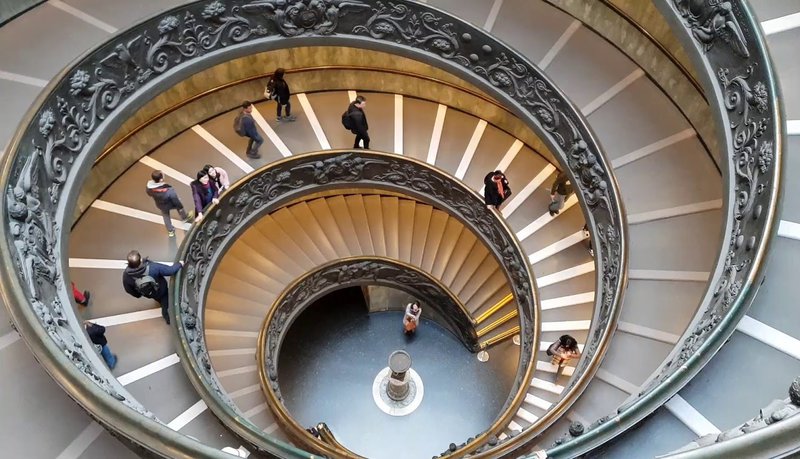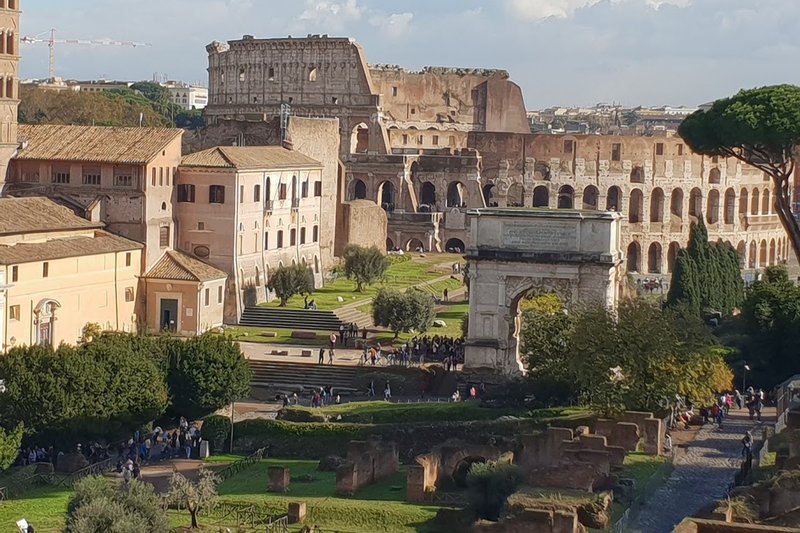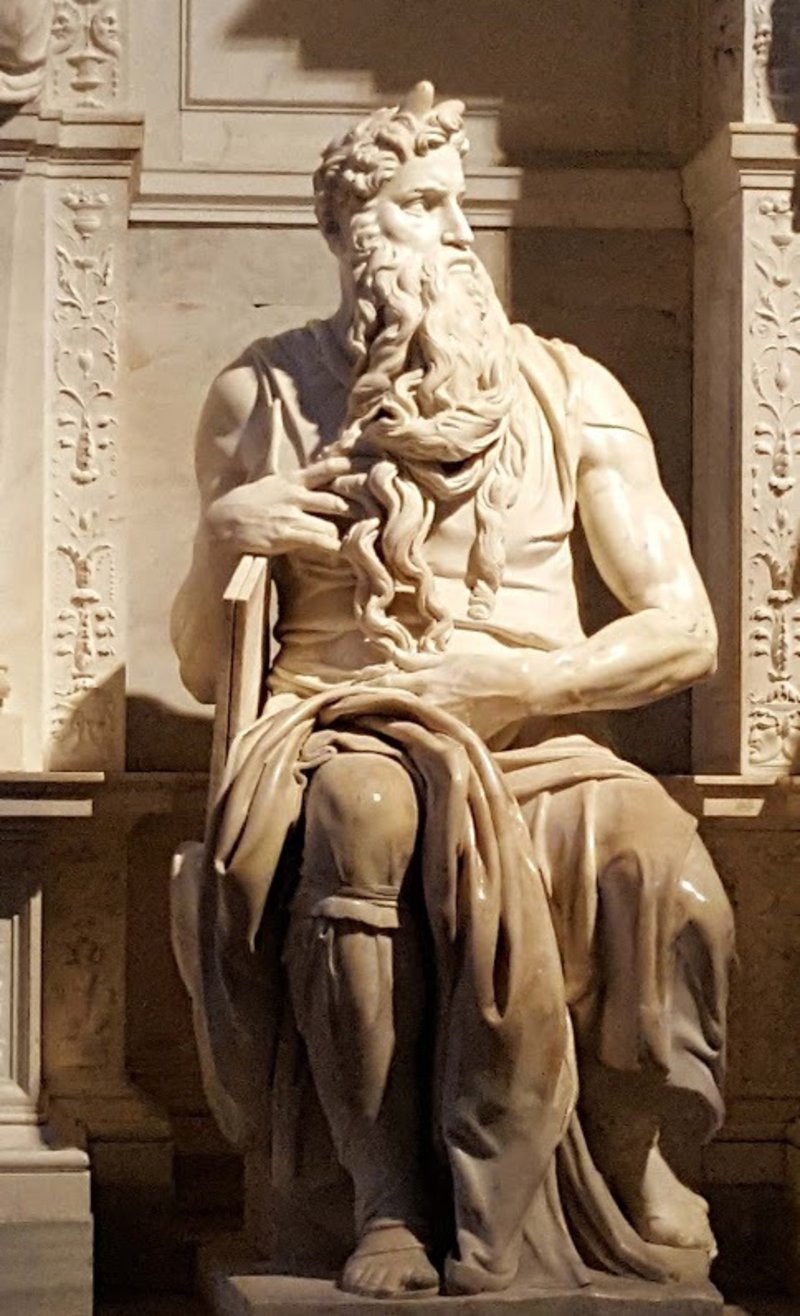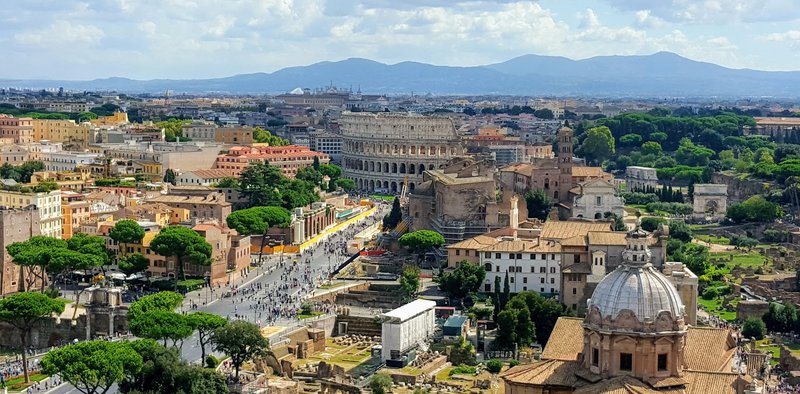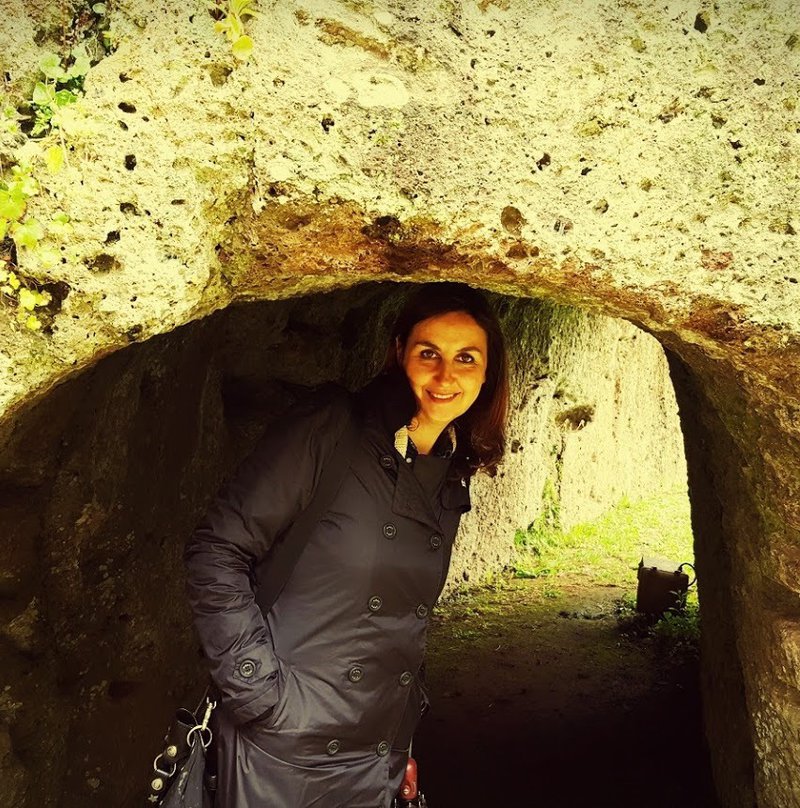Catalans Abroad
Maria Hernández Reig.
Guide to the Sovtintendenza Archeologica di Roma and the Municipal Museums of Rome
The art history mecca
Why did you leave Catalonia?
I was young and eager to see the world. At that time I was studying art history at the Central University of Barcelona and especially during baroque art lessons I found no meaning in all those flat slides that sometimes were in black and white and so lost all the qualities of that scenographic art, full of chiaroscuros and different points of view. It was then that I decided to move to Rome to make these slides three-dimensional.
Why did you choose Rome?
Because it’s the city with the greatest cultural heritage in the world, the mecca of any art historian.
Are you happy with the job opportunities you found there?
At the beginning it was not easy because there aren’t so many job opportunities in Rome, especially in relation to qualified and well-paid jobs. Although Rome is the paradise of an art historian, it is not easy to access the art world because it’s overstretched. You have to be persistent and stubborn. Rome is not a city for shy or undetermined people. You have to be an indefatigable fighter to get the job you really want. I’m very stubborn and so I’m very happy with the job opportunities this city has offered me. It’s a difficult city but it allows you to express yourself, it inspires and encourages you. Rome has fulfilled me professionally.
What do you think is the best thing about living there?
The chance to be constantly in touch with art, history or genius, which is everything that has always fascinated me.
What would you like to change?
Many things. As a historian of art, the mismanagement of its monuments and the poor care that Romans have for their city. As a citizen, the corruption which is present in institutions and in many of the city welfare sectors. As a whole, the indifference or careless attitude of its inhabitants, the excessive individualism, the little sense of community that makes everything chaotic, stressful, complicated and even meaningless. I don’t like the Roman “furbizia” (malicious cunning). “Menefreghismo” (indifference) and “furbizia” are two words associated with the Roman personality, and not precisely positive.
What do you miss most from home?
People mainly, relatives and friends. I didn’t move to the antipodes, Italy is not so different from my country and so it is easy to find certain similarities, you don’t miss the climate, food, landscape or nature so much. However, I do miss the bells of La Garriga bell tower, which was in front of my house, because they bring me memories of the life I lived near my loved ones. I also miss the “correfocs” , the “valls de diables”, the sound of the “tenora”, the “gegants i capgrossos”, the “Festes Majors” and the floral carpets of the Corpus, even if in some places of Italy there are similar customs or traditions. And I also miss the crickets, because even if there are some in other parts of Italy, you don’t find them in Rome.
What do you take with you as a present from your new home when you go back to Catalonia?
I usually return home for Christmas and bring high quality autochthonous products that are impossible to find there (despite globalisation). I bring a certain type of turron that is nothing like what we have in Catalonia (the Roman torrone, for example, which is shaped like a ring ), or an artisanal panettone with pistachio cream made in Sicily or a befana, which is a good witch that brings children sweets on Kings day .
What characterises your neighbourhood?
I’ve lived half my life in Rome and my life here has been very itinerant, I’ve changed home and neighbourhood many times. I’m currently living in a property in the north of the city, not far from the Vatican but far from the bustle of the city centre. It’s a quiet residential area with panoramic views and surrounded by a green area. Very close there is the astronomical observatory and it doesn’t feel like you’re in Rome. This allows me to get away from the chaos that I have to endure every day because of my job.
Are there any places to avoid at all costs?
The Vatican museums during the May 1st long weekend. They’re extremely crowded and the visit can become a nightmare that may keep you away from art forever, especially if you go with children. You should also avoid tourist restaurants, located near the main sights, especially those where the waiter invites tourists to enter because a good restaurant does not need to do that. They’re expensive and bad places. In a word, they’re a complete con!
What’s the best experience you had in your adoptive country?
It has to be my work experience, which has allowed me to come into close contact with art and so feel useful for my country. For 10 years, I worked as an official guide to the soprintendenza Arheologica di Roma (part of the Italian culture ministry). This opened the doors of the city’s main museums and allowed me to see places that are generally closed to the public. I had the chance to visit the museums and exhibition halls and talk to their directors and curators. I was very fortunate, it was a dream for an art historian. Those were years of very intense and enriching study. Ten years later, I decided to become self-employed. I took advantage of the fact that there was a competition to become an official tourist guide for Rome and its Province. It was a less qualified job than the one I had been doing until then and with fewer guarantees but I was offered the chance of using all the experience I had acquired for 10 years to create something new and explore new fields. I created Romaquí, a professional guided service in Rome in the Catalan language. It was the first one, and for many years it was the only guided tour service for individuals in Catalan in the world outside our own country. Those were very exciting years. It makes me feel proud as I can do something for my language from abroad. Seven years ago I decided to go further and created, with other guides, the Associació de guies catalans del món. It is an association of authorised guides who use Catalan on their tours. Nowadays, there are around 40 destinations and you can find us on 5 continents. A new adventure carried out jointly with other guides around the world. In short, my work experience has given me many emotions over the years.
What’s the best kept secret about the area?
I would look for it inside the Vatican.
catalans abroad rome (italy)
CATALANS ABROAD rome (italy)
SOME SUGGESTIONS:
What do you consider the highlights for any brief visit for the first time?
I really hate the highlights because in Rome they are usually crowded and that makes them lose a lot of their charm. The highlights are the Colosseum and the Roman Forum, the Sistine Chapel, the Pantheon, the Fontana di Trevi, Piazza Navona and the Basilica of San Peter… The list is long because Rome is an open-air museum. I would recommend visitors walk through the streets of the centre, without a map or a plan. When you walk in Rome you don’t need to look for anything because the treasures of Rome come to meet you, suddenly, without warning and that in itself is fantastic.
And if visitors have more time or make a return visit?
You have to return to Rome and surely the second trip will be better than the first one because it will allow you to enjoy the genius of Rome more and avoid the large urban agglomerations. A weekend is not enough to get to know and appreciate the city. I would tell them to go and see the Berinis and the Caravaggios, to go to the Borghese gallery to see the Apollo and Dafne by Bernini, the best sculpture I have ever seen, or to enter Santa Maria della Vittoria church to see the ecstasy of Santa Teresa or the Medusa head in the Capitoline museums. They should also see the Caravaggios of St. Louis in the French church, Saint Augustine church or Santa Maria del Popola church. The frescoes of Raphael in Villa de la Farnesina. The Roman frescoes of the Villa di Livia and Julia’s house, which is the best that has been found in Roman painting from the Palazzo Massimo Museum or the house of Augustus on the Palatin hill. They shouldn’t miss the underground city, the Domus Aurea of Nero. The medieval churches Sant Climent, Santa Maria in Trastevere, Sant Stefano Rottondo, and Santa Prassede are also interesting.
Can you recommend a place to have lunch with friends?
I would recommend a restaurant that is not in the centre, a place frequented by Romans. It’s located in a good neighbourhood of Rome, in Prati, but the restaurant is very popular and simple. It’s called Caccio e Pepe and I recommend it to those who want to taste the authentic carbonara, that is without cream or bacon. Carbonara is a typical Roman dish and for the Italians it’s very hard to accept how we cook it! Don’t miss it!
Where would you have a special dinner for two?
In the same place. It’s not an intimate or quiet restaurant but I think that good spaghetti is very erotic! Eating well helps to form good relationships. If you want to stay in the centre I would advise you to go to the restaurant Roma Sparita in Trastevere and eat a plate of Caccio e Peppe because they cook the best one in Rome and it’s served on a nest of parmiggiano. However, you should book in advance.
When is the best time of year to plan the visit?
In the autumn... we have very beautiful sunny days then.
Leave a comment
Sign in.
Sign in if you are already a verified reader.
I want to become verified reader.
To leave comments on the website you must be a verified reader.
Note: To leave comments on the website you must be a verified reader and accept the conditions of use.

